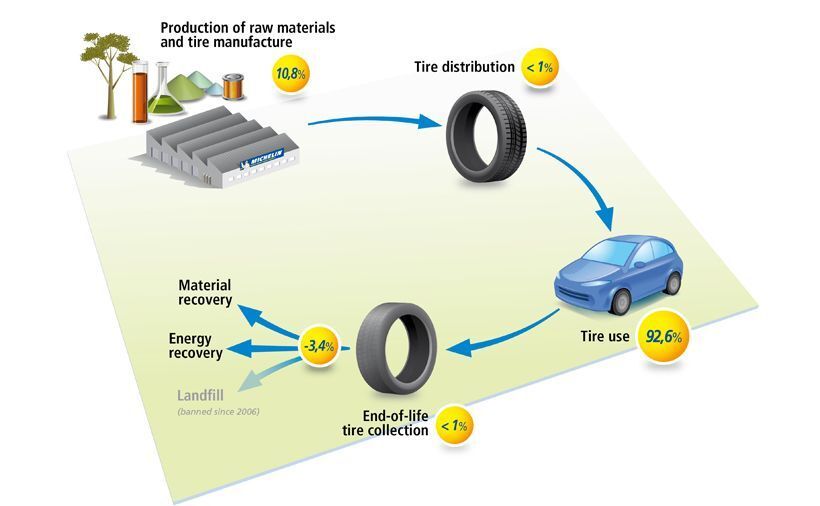Environment
Life cycle assessments of tires clearly show that it is during its use that the impact of a tire on the environment is at its greatest: 92.6% for a car tire.
LIFE CYCLE ASSESSMENTS OF PASSENGER CAR TIRE

Life cycle assessments of tires clearly show that it is during its use that the impact of a tire on the environment is at its greatest: 92.6% for a car tire.
